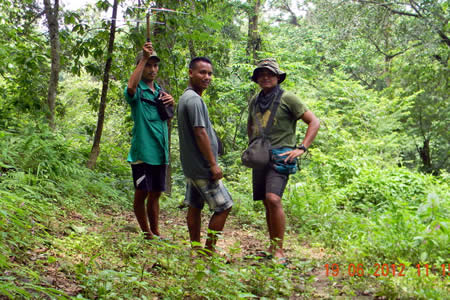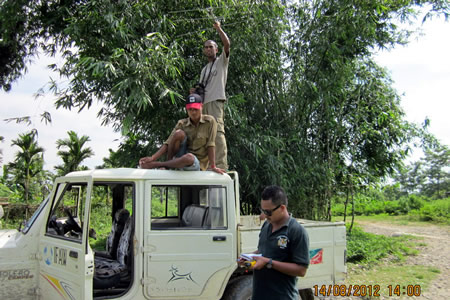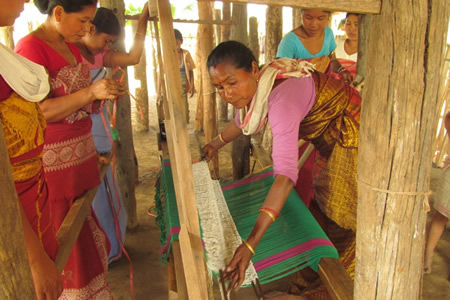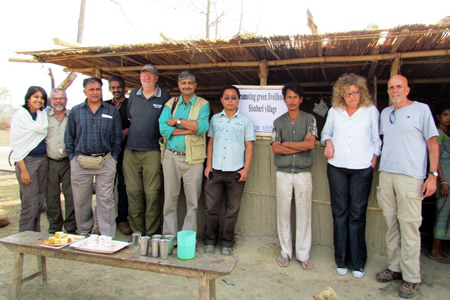Against All Odds: Conservation during crisis
Bear and clouded leopard monitoring team
Manas (Assam), September 11, 2012: This August, a devastating flood made way for devastating bloodshed as ethnic communal riots broke out across Assam. The clashes, which erupted in July in four districts of western Assam and Bodoland Territorial Administrative Districts – Kokrajhar, Chirang, Baksa and Dhubri affected over 500,000 people in the state, even as life was slowly surfacing after the floods, killing more than 73 people and displacing thousands of people from 500 villages set ablaze.
Rumours on social media networks fuelled fear in other parts of the country that caused an exodus of people of north-eastern origin back to their states. Amidst indefinite bandhs (strikes) that led to blocked roads and stoppage of trains that paralysed normal life, fleeing populations poured into 270 interim relief camps across Assam. People in Kokrajhar District were left without rations, livestock, and communication.
Elephant monitoring
The IFAW-WTI team in Manas led by Dr Bhaskar Choudhury stayed put at the project site in this time of crisis. Human tendency is to save one’s own life first but the team stood for animals even as shoot-at sight orders were issued in Kokrajhar and a night curfew imposed in Chirang and Dhubri districts.
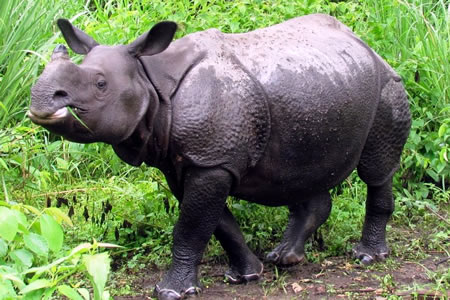
Rehabilitated rhino in Manas
The Elephant Rehabilitation team has collared three elephants and is now monitoring them and ensuring their survival and keeping the track of field data.
Monitoring rehabilitated animals after release is the most critical component of the project. The challenges faced while tracking long ranging animals like elephants in this landscape are immense. The team needs to be on the move continuously, and if this is hampered by riots and strikes for more than 24 hours, it is easy to lose track of the animals, which was exactly the case from July 29 to the third week of August. Added to this was the fear of encountering a violent mob of miscreants. The rehabilitated elephants moved towards the eastern buffer area of the park during later part of June forcing the team to move in human habitats on the south boundary where night curfew was imposed.
Weaving centre in Nabin Nagar
“Our team succeeded in tracking and sighting Sony on August 23 – 28, the female elephant with collar amidst this chaos. Collared bears were sighted twice in August at Pipsu” said Dr Choudhury. “I am lucky to lead a team of dedicated people who have cared for their elephants more than their own lives many a times. They have only one way of tackling the issue, pray to the elephant god and hope for the best”, he added while thanking the team of animal keepers Lukas, Debajit, Gobinda and Madhab led by biologist Anjan Sangma who made this possible.
In Pipsoo, the IFAW-WTI team is monitoring Asiatic black bears and clouded leopards in the last phase of their rehabilitation.
“The rehabilitation site is more than 25 km from the nearest village Kachugaon,” says Maheshwar Basumatary, who walked this distance for essential supplies during the curfew. Despite this, monitoring continued and the collared bears were sighted twice in August.
At the CWRC transit home in Kokrajhar, veterinarian Panjit Basumatary and his team of animal keepers were caring for a leopard cat, a lesser adjutant stork and a water lizard through July and August. Subiram Basumatary would travel to market risking his own life to source daily necessities, aware of the danger he faced. The keepers made sure they fed the animals on time, before rushing back to the safety of their homes in the evenings.
Sociologist Samar Boro is relieved that the Kachugaon Cluster has not been affected by the riots. “The Nabin Nagar weaving project has been completed. The weaving of Bodo towels and Gamusas in Poladabi the piggery in Takampur are progressing well,” he said.

